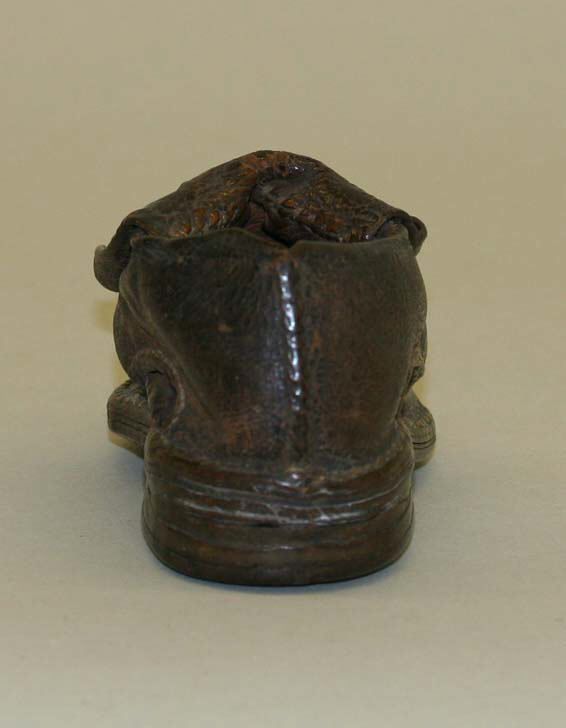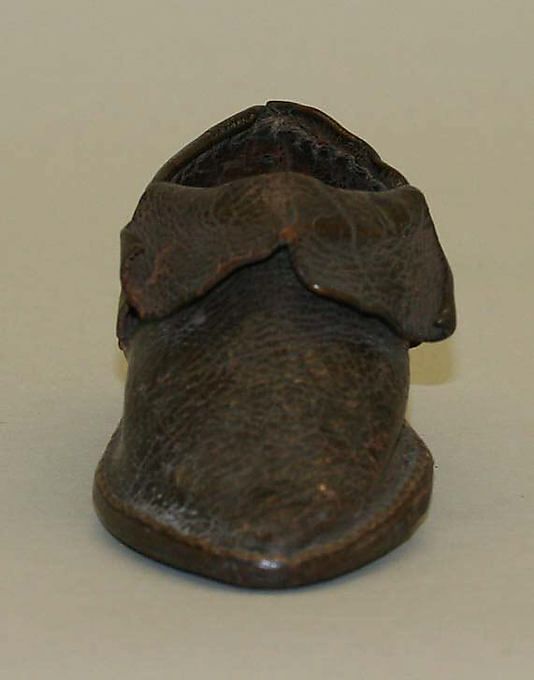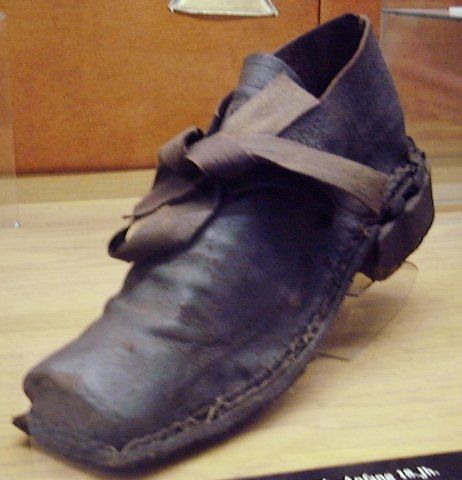In the 70’s to early 80's, I was trying to figure out how to make hand sewn shoes (and if I wanted to try my hand at it) as I was already making some historic leather items to help "pay for my hobby." I had already made leather 18th and early 19th century sword and bayonet scabbards, sword and bayonet hangers, blocked 19th century cap pouches and cartridge boxes to give an example of the range I worked on. Actually making the wooden forms for the blocked leather items and using them to make accurate copies of the 19th century cap and cartridge boxes was some of the best experience I had that would somewhat transfer over to shoe making. I was not and am not a trained Saddle maker or Leather Worker, just a somewhat advanced amateur.
I spent quite a lot of time in the Cordwainer's Shop at Colonial Williamsburg and the Cobbler's Shop in "Old Salem" at Winston Salem, NC. The Head Cordwainer at CW found a kindred spirit in me and actually gave me some training in leather working and I spent a lot of time there during different visits. I did not spend as much time in the Cobbler’s shop at “Old Salem,” in part as I was primarily interested in finding out additional information they could provide. So I offer the following information more as a report, rather than a comprehensive technical package.
During the 18th century, the trades of Cordwainers and Cobblers were two distinctly different, though related trades. Cordwainers actually designed and made shoes to order for individual customers while Cobblers were considered inferior to Cordwainers and mostly repaired shoes. (I can imagine if you called a Cordwainer by the term Cobbler, you would have REALLY been in for it. Grin.) Repair normally means replacing heels and soles when necessary and in the case of soles, if enough upper leather was left or could be stretched so that the uppers would still fit the person.
Cordwainers had some sophisticated measuring tools they used to measure the customer’s feet. They would write down the measurements and then carve a last to fit that person’s foot. Of course, a customer paid extra when the last had to be made, BUT the last was saved by the Cordwainer and used again when the customer ordered more shoes. So additional or future shoes would not cost as much as when the last had to be made for the first pair of shoes. The last was also made so as to make whatever style of toe and shoe that was then fashionable and appeared “well formed and smooth” to the eye. Leather would be tacked onto and later removed from the last to fit it to the right and left feet. Lasts made for childrens’ shoes would be saved and used for other customers children as they grew. A Master Cordwainer’s Shop would have had a large selection of lasts on hand.
Of course, if there were special fitting necessary for one foot over the other, the Cordwainer could do that. Some of the work done by CW Cordwainers over the years has been for people with Orthopedic problems and they reported that modern Orthopedic shoes are not nearly as well fitting and comfortable as those made by 18th century Cordwainer standards. Of course, learning to measure customer’s feet and making proper lasts no doubt were a huge part of the Apprenticeship to become a true Cordwainer.
I was somewhat surprised to learn that while Cordwainers stocked leather hides to make shoes, it was not uncommon that people would supply hides and leave them with the Cordwainer to make shoes for their selves and their families. Of course the price of shoes made from Customers’ leather was less than if the Cordwainer had to supply the leather.
No doubt that even the simplest shoes, made by a real Cordwainer, were the most expensive shoes made in the 18th century. However, they also were no doubt the best fitting and best made shoes that would last a long time. I can not document this, but I always got the impression one almost had to have been of at least middle class to afford such shoes. Oh, Cordwainers shoes often did not have cleats on the soles, because they would have torn up the wood floors in period houses. Of course they could add them if the customer wanted them, though.
Due to the cost of Cordwainer’s shoes, I also got the impression they stayed in Towns where there were enough Customers to support their business. I did ask if there was documentation of Journeymen Cordwainers traveling at least to the homes of the wealthy to make shoes for them and going from say one plantation to another. The information I got was that the wealthy came to the Cordwainers Shops in town and got their feet measured and picked up the shoes or had them delivered when they were done. Journeymen Cordwainers were more likely to travel to larger settled areas to set up shop as the population moved westward, if they did not stay in their Master’s Shop for most or all of their career.
More coming.
Gus








